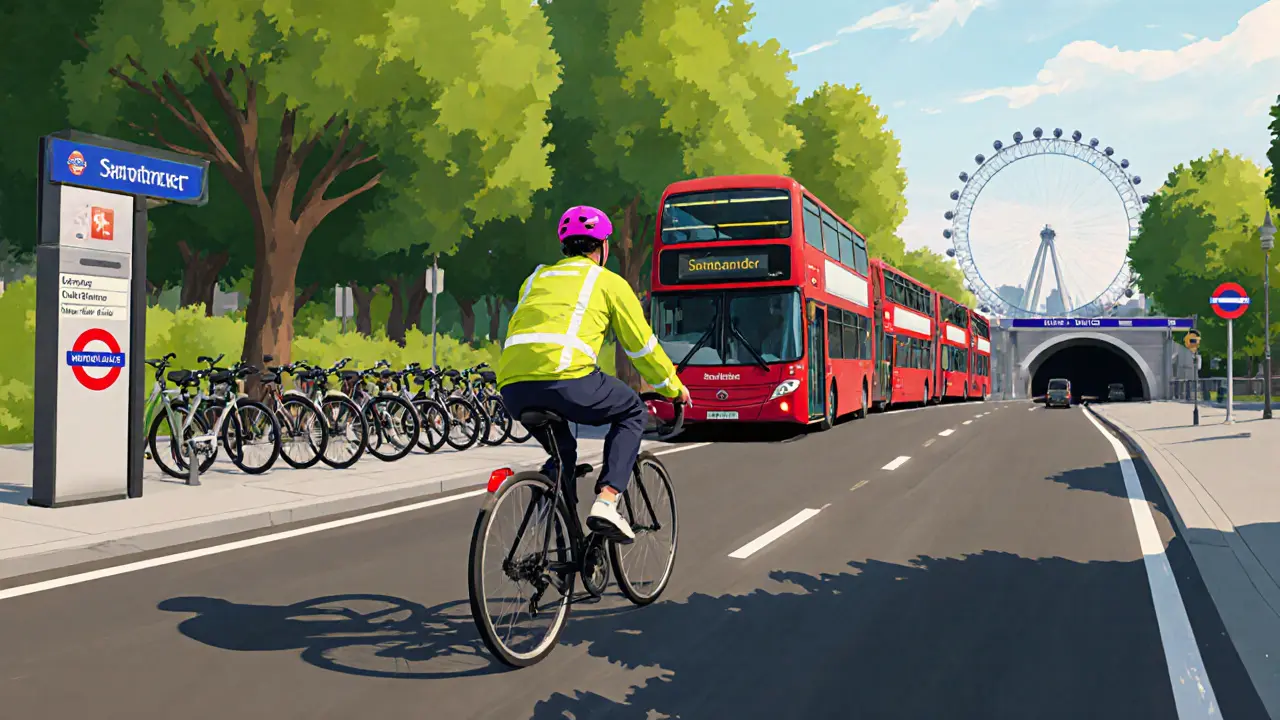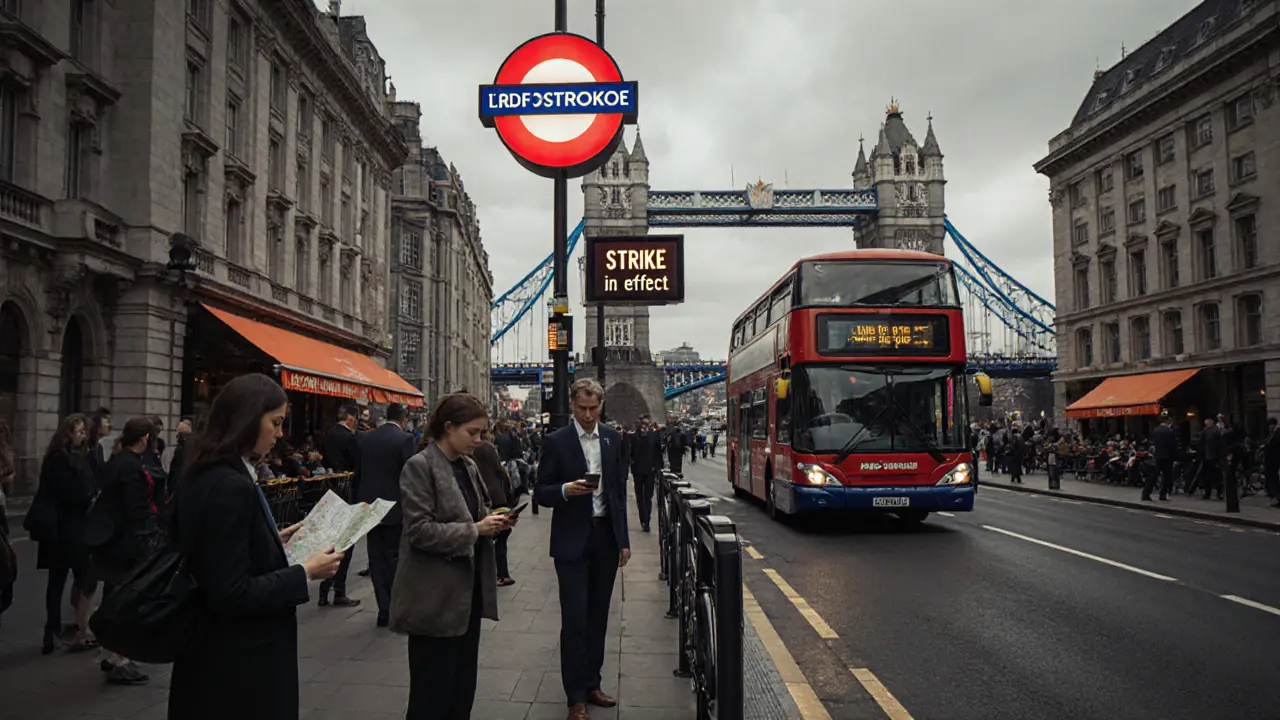When London tube strikes halt the capital’s underground rail service, commuters are forced to rethink how they move around the city, a surprising lifestyle shift emerges. From swapping the Tube for bicycles to embracing remote‑work policies, Londoners are remixing their daily routines in real time.
London Tube Strikes: Your Comprehensive Guide
In this article we unpack what London tube strikes mean for everyday life, explore alternative ways to get around, and give you a practical checklist for staying productive when the rails are down. Expect a mix of data, personal anecdotes, and clear steps you can apply tomorrow.
Understanding the Basics of Tube Strikes
Origins and History
The Underground, affectionately called the “Tube,” launched in 1863. Over the decades, workers have periodically walked out to demand better pay, safety standards, and job security. Notable walkouts occurred in 2005, 2010, and most recently in 2023‑24, each lasting several days and affecting millions of commuters.
Core Principles or Components
A strike typically involves:
- Withdrawal of driver and signal staff from their duties.
- Suspension of scheduled services across most lines.
- Activation of contingency plans by Transport for London the public body that oversees buses, trains, and the Tube.
Because the underground is a backbone of city mobility, even a short disruption ripples through every other mode of transport.
How It Differs from Related Disruptions
Unlike a planned engineering closure, a strike is unpredictable and can extend without notice. The following table compares a Tube strike with a typical weekend engineering blockade.
| Aspect | Tube Strike | Engineering Closure |
|---|---|---|
| Predictability | Low - can start suddenly | High - announced weeks ahead |
| Duration | 1‑7 days, often extended | Usually 1‑2 days |
| Impact Scope | Network‑wide, affecting all lines | Limited to specific sections |
| Alternative Services | Bus shuttles, night routes, bike rentals | Planned replacement buses |
Who Can Benefit from Re‑thinking Their Commute?
Anyone who relies on the Tube - from office workers and students to tourists - stands to gain. Even occasional users notice the difference; a regular commuter can cut travel time by 15‑20% simply by switching to a faster mode like cycling when the Tube isn’t running.
Benefits of a Lifestyle Shift for City Dwellers
Health Boost from Walking and Cycling
Replacing a 30‑minute tube ride with a 20‑minute bike ride adds cardio, improves mood, and reduces stress. Public Health England reports that regular active commuting can lower heart disease risk by up to 30%.
Cost Savings
Transport for London’s daily cap is £7.20. A bus‑only day during a strike can push the total to £10‑12. In contrast, a city bike subscription costs about £30 per month, often cheaper after the first week.
Environmental Impact
Each Tube passenger avoided reduces CO₂ emissions by roughly 0.6 kg per trip. Multiply that by millions of daily riders, and a week‑long strike can shave several thousand tonnes of carbon from the city’s footprint.
Practical Flexibility
When you get comfortable using multiple transport modes, your schedule becomes less vulnerable. A short‑notice change in shift times no longer forces a frantic scramble for a delayed train.
Below is a quick‑reference table summarising the main advantages of diversifying your commute.
| Benefit | Description | Typical Impact |
|---|---|---|
| Health | Increased physical activity | ~2,000 extra steps/day |
| Money | Lower daily travel expenses | £3‑£5 saved per day |
| Environment | Reduced emissions | -0.6 kg CO₂ per trip |
| Flexibility | More travel options | Less reliance on a single service |
What to Expect When the Tube Stops Running
Setting or Context
During a strike, the city’s bus network runs extra routes, night buses extend service, and bike‑share stations fill with empty docks. Expect longer wait times at bus stops and crowded bike stations near major stations.
Key Processes or Steps
- Check the latest strike updates on the TfL website or a reliable news app.
- Identify the most viable alternative - bus, bike, walking, or remote work.
- Plan the new route using a journey planner that factors in real‑time delays.
- Adjust your start time if necessary; most alternatives take longer.
Customization Options
Everyone’s situation is different. If you have a flexible employer, negotiate a work‑from‑home day. If you own a bike, consider a portable lock for quick stops. If you use a car, look into park‑and‑ride schemes that keep you out of central congestion.
Communication and Preparation
Let your team know you’ll be using a different route, especially if you might be a few minutes late. Sharing a simple "I'm on the bus" message can keep expectations realistic.

How to Practice Alternative Commuting
Setting Up for Success
Start by mapping out the nearest bike‑share station and the bus routes that serve your workplace. Keep a small emergency kit in your bag - spare charger, rain jacket, and a reusable water bottle.
Choosing the Right Tools and Resources
- Citymapper a journey‑planning app that merges tube, bus, bike, and walking routes
- Santander Cycles London’s public bike‑share scheme
- Google Maps live traffic layer for real‑time bus congestion.
Step‑by‑Step Guide for a Mixed Commute
- Open Citymapper and enter your home and office addresses.
- Select “Bike + Bus” as your preferred mode.
- Note the first bike station, the number of available bikes, and the nearest bus stop.
- Ride to the bike station, dock a bike, then board the designated bus.
- Track the bus arrival on the app and alight at the closest stop to your office.
- Walk the remaining distance; enjoy a quick stretch before you start work.
Tips for Beginners or Couples
If you’re new to biking, test the route on a weekend first. For couples sharing a commute, synchronize departure times and consider a shared bike‑lock for safety.
FAQ: Common Questions About London Tube Strikes
What should I do the day a tube strike starts?
First, check TfL’s official announcement for the strike’s scope. Then, decide whether you can work from home, take a bus, or use a bike‑share. If you’re unsure, call your manager early and propose an alternative plan.
How reliable are the replacement bus services?
Buses run on a reduced schedule but are generally dependable. Expect crowds during peak hours and allow an extra 10‑15 minutes for travel.
Is cycling safe during a strike?
Cycling is safe if you follow traffic rules, wear a helmet, and use lights after dark. London’s new ‘Cycle Superhighways’ make commuting smoother, but always stay aware of bus traffic on busy streets.
Can I claim travel expenses if I work from home?
Many employers will reimburse home‑office costs (internet, electricity) but not travel that wasn’t incurred. Check your company’s policy; some treat work‑from‑home days as a non‑travel day.
Safety and Ethical Considerations
Choosing Qualified Resources
When you sign up for a bike‑share, verify that the operator maintains the fleet and offers helmets. For remote‑work setups, ensure your home office meets ergonomic standards.
Safety Practices
Keep a reflective vest handy for low‑light conditions, and always lock your bike to a sturdy post. If you’re using a bus, stay behind the driver’s line to avoid sudden stops.
| Practice | Purpose | Example |
|---|---|---|
| Wear a helmet | Head injury protection | Bike ride to work |
| Use a high‑visibility jacket | Stay seen in traffic | Walking during dusk |
| Check bus arrival times | Reduce waiting on crowded stops | Live TfL feed |
| Secure bike properly | Prevent theft | Lock to a designated pole |
Setting Boundaries
If you’re negotiating a work‑from‑home day, be clear about availability windows. Let colleagues know your offline periods to avoid missed meetings.
Contraindications or Risks
People with severe mobility issues may find replacement buses inadequate. In such cases, discuss a formal remote‑work agreement with your employer.

Enhancing Your Experience with Alternative Commuting
Adding Complementary Practices
Combine a bike ride with a short mindfulness session at a park. The endorphin boost from exercise plus a few minutes of breathing can set a positive tone for the whole day.
Collaborative or Solo Engagement
Some commuters form “bike carpools” where two riders share a lock‑box and split the cost of a premium bike‑share membership. Solo riders might schedule a coffee stop to break up a long bus journey.
Using Tools or Props
Invest in a waterproof pannier for your bike to keep laptops dry, and consider a portable phone charger for extended bus rides with weak Wi‑Fi.
Regular Engagement for Benefits
Set a monthly review of your commute data - time saved, money spent, calories burned. Notice trends? Adjust your route accordingly and keep the momentum going.
Finding Resources or Experts for Alternative Commuting
Researching Qualified Experts
Look for local cycling clubs that offer safety workshops. Check Transport for London's “London Cycling Partnership” page for accredited instructors.
Online Guides and Communities
Reddit’s r/London and the “London Cyclists” Facebook group share real‑time strike updates, route tips, and bike‑share tricks.
Legal or Cultural Considerations
London’s road rules require cyclists to ride on the road, not the pavement, unless signage permits. Remember to respect pedestrian zones, especially during busy strike days when foot traffic spikes.
Resources for Continued Learning
- “The Cycling Handbook” - a practical guide for city riders.
- “Remote Work Playbook” - templates for negotiating work‑from‑home days.
- Transport for London’s annual “Travel Trends” report for data‑driven planning.
Conclusion: Why Rethinking Your Commute Is Worth It
A Path to a Healthier, More Flexible Lifestyle
London tube strikes force a pause, but that pause can become a springboard. By mixing buses, bikes, and remote work, you gain health, save money, and reduce your carbon footprint.
Try It Mindfully
Pick one alternative for the next strike day, track how it feels, and adjust. Small tweaks add up to a big lifestyle upgrade.
Share Your Journey
Did a bike‑share route save you time? Did working from home boost your productivity? Drop a comment below or follow the blog for more urban‑living tips.
Some links may be affiliate links, but all recommendations are based on research and quality.

